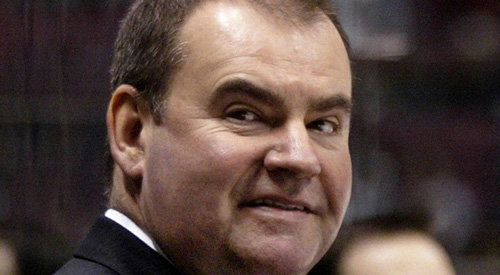
The ever-growing issue of the Hockey Hall of Fame induction process
This November, Ed Belfour, Doug Gilmour, Mark Howe and Joe Nieuwendyk will comprise theHockey Hall of Fame’s class of 2011. All were more than worthy selections, boasting a combined five Stanley Cup rings, over 3,000 career points and multiple individual awards. However, there was one glaring omission: Pat Burns.
Burns, who passed away November, 2010 after a lengthy battle with cancer, was snubbed for the second straight year despite an NHL resume that speaks loudly. Burns won a Stanley Cup with the Devils in 2003 and is the only coach in NHL history to win the Jack Adams Award for coach of the year three times.
Burns’ exclusion is even more puzzling considering the class of 2011 is the first since 1981 which does not include an inductee in the builder category.
When asked about Burns’ omission by the media, Hall of Fame CEO Bill Hall failed to provide a reason.
“This really is our confidentiality, and we’re not at liberty to discuss the process, or who was or was not involved.”
If this sounds strangely secretive, it’s because it is.
New inductees must first be nominated by an 18-member selection committee, which consists of Hockey Hall of Fame members, hockey personnel and media members. They must then receive the support of 75 percent of the committee, who vote under secret ballot.
[php snippet=1]
Each committee member is appointed by the Hall of Fame board of directors to a three-year term. As of 2009, the group consisted of Pat Quinn, Scotty Bowman, Michael Farber, Mike Gartner, Serge Savard and others.
While the names of the all members are public, the players they vote for are not.
Bill Hall argues that this privacy allows committee members to speak freely, creating very strong debate.
That’s possible, but committee members still lack all accountability for their selections or, in the case of Burns, their non-selections.
This entire process is in stark contrast to that of the National Baseball Hall of Fame, which inducts new members primarily based on the voting by the Baseball Writers’ Association of America (BBWAA) – a professional association for baseball journalists writing for daily newspapers, magazines and qualifying websites. All writers with 10 years of membership in the BBWAA are eligible to vote. This consists of hundreds of people, rather than a select few, which ensures bias is moderated.
Like their hockey counterparts, voters for the baseball hall select up to 10 players and a candidate must receive 75 percent of the vote to gain entrance. Sounds fair, right?
While there is no formal requirement for a writer to make their vote public, many choose to present their choices alongside an explanation or, for some contentious choices, a defense. This transparency leads to debate, which increases the knowledge of not only the public but other voters, allowing for voting patterns to change over time.
The National Baseball Hall of Fame certainly does not escape criticism and the way they handle the upcoming eligibility of players from the steroid era will be a major issue. But, in the grand scheme of things, the extra layer of transparency is integral to their process.
It is, by and large, a major advantage over the Hockey Hall of Fame – who neglects the value of clearness, of providing concise answers to fans and pundits.
Want proof baseball does it the correct way?
The National Baseball Hall of Fame has never hired a legal team to investigate an appointment of a member to their Hall of Fame. Yet, in 1993, then NHL President Gil Stein was elected to the Hockey Hall of Fame amidst allegations he engineered his selection through manipulation of the hall’s board of directors.
The accusations prompted the NHL to hire two independent lawyers to lead an investigation into Stein’s induction. The team concluded Stein was indeed elected through coercion, casting a black mark over the entire selection process ever since.
The Hockey Hall of Fame needs to seriously reevaluate how they select their members. After once again illogically turning down Pat Burns, the calls for this change have only grown louder.
[php snippet=1]

